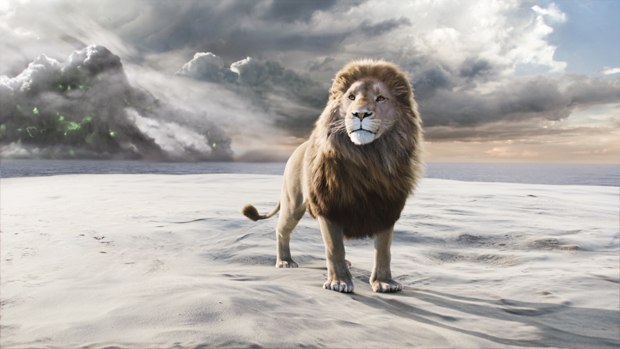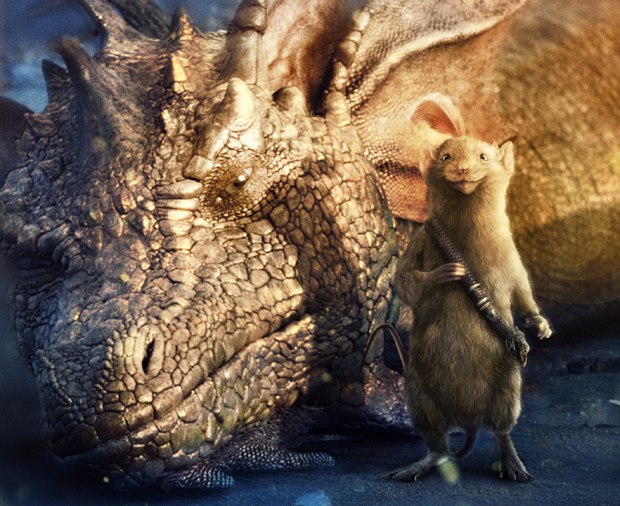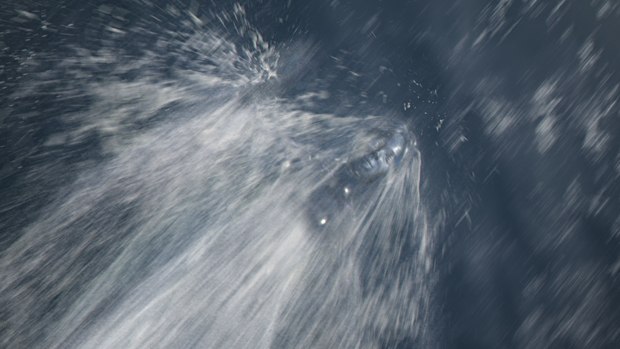Read about the latest VFX magic conjured for a Narnia voyage at sea with MPC, Framestore, Cinesite, The Senate and The Mill.
Check out The Chronicles of Narnia: The Voyage of the Dawn Treader trailers and clips at AWNtv!
In The Dawn Treader, the third film adaptation of C.S. Lewis' famed Chronicles of Narnia saga, Edmund (Skander Keynes) and Lucy (Georgie Henley) travel back to Narnia with their pill of a cousin, Eustace (Will Poulter). They set sail on the Dawn Treader with King Caspian (Ben Barnes) in search of the seven lost lords. With Disney bowing out, Walden Media has partnered with Fox, and Michael Apted (The World is Not Enough, the continuing Up docs, Gorillas in the Mist) replaces Andrew Adamson as director. Given Apted's dramatic sensibilities, he sought even greater believability for VFX under the overall supervision of Angus Bickerton. MPC, Framestore and Cinesite return and are joined by The Senate and The Mill.
MPC, the primary vendor, created 700 shots, including the Dawn Treader ship, the return of the heroic mouse, Reepicheep, the dragon version of Eustace and the giant sea serpent.
"They wanted to make it seem like a voyage at sea without filming at sea," remarks Adam Valdez, MPC's visual effects supervisor. "We threw everything in the kitchen sink with this one because we had to do talking characters, creature work, CG water, fire, volumetric smoke-based effects. There was quite a lot of design process throughout, including the look and mood of certain scenes. It should also be noted that the plate photography of John Mahaffie, the second unit director, was instrumental in bringing it all together. For the Dawn Treader, there were two separate shoots with set builds that utilized plate photography; these were tracked into the environment to give a sense of movement, sometimes augmented by CG skies for continuity or changing time of day.
"One of the things we're proudest of is the acting between Reepicheep and Eustace. They gave Reepicheep some really good scenes and it was nice to see them embrace the CG character so he comes off as one of the cast. And they developed a friendship that arcs nicely when Eustace becomes a dragon. We did make a few improvements to Reepicheep: in particular, we moved the eyes forward a bit to make it easier for close-ups and medium close-ups, being wary of not turning him into a cartoon mouse and changing the design too much. We also rearticulated his face to give better control of mouth shapes and eye shapes. He also got more of a pot belly and there were some changes to his hair grooming because Michael Apted wanted a slightly more mature feel to him."
The dragon posed a design challenge, particularly around its face, to subtly connect with the actor and to also create the feeling that it was a youthful dragon that could play emotional moments when he's more vulnerable and less defensive. "It's tricky having believable characters that need to be expressive, so it's that melding of human facial features with different animal morphologies," Valdez continues. "And with the dragon there was concern about how the skin would look and we went ultimately for a crocodile hide feel. That challenged us in the skinning area because we wanted the skin to stretch but when it compresses to fold and buckle. We have a combination here of muscle and skin simulation tools plus good old-fashioned sculpting for a layered approach. His wings too were difficult to make look natural."
The trick with the sea serpent was that he had a complex rig and had to wrap himself around the ship. "At one point, he opened his body to reveal all these horrifying inspectoid spines," Valdez explains. "This horrified the animators when they first started because there were so many limbs to articulate, but they ended up being a combination of procedural wavelet motions with keyframes. And we did a big motion capture shoot for a crowd library of sailors on the ship. There are a few dozen shots of a full-CG boat and the full-CG crew on the deck and that was pretty easy work for our Alice crowd tool."
A more abstract challenge was how to depict the amorphous Dark Island, which represents the force of evil in Narnia. "We did various experiments with particle and fluid simulations and created an island-sized massive cloud that has an almost octopus form with large tendrils that reach out into the ocean," Valdez suggests. "The trick was to have parts of the smoke contracting and to have the tendrils squirming and twisting to keep the smoke bound to this shape. That took a few months to figure and a lot of rendering development to figure out how to render the complex simulation of millions of particles with internal light as well as external soft shadowing from the sun. It's not quite a character but is a definite presence and connects with work done at Cinesite with the smoke tendrils that appear in other scenes throughout the film. The final battle takes place inside the creature, which required a separate effort throughout the last 200 shots done on bluescreen stages where an entire mood and look had to be established and a certain grade had to be figured out. We used quite a lot of Nuke for that."
For its part, Cinesite, under the supervision of Matt Johnson, provided CG particle mist tendrils that were extensively featured in the early part of this "Figures in the Mist" sequence with 60 shots. These ghostly trails were created in Houdini utilizing bespoke fluid simulation tools.
Animations were blocked out for each tendril shot using "character" eels to give a sense of position, speed and movement to the mist. The animations were cached, and fluid simulations derived from the data. Houdini renders produced numerous lighting passes for each of the mist tendrils. These included passes for light emitting particles, internal beams and shadows, all of which could be controlled in Nuke to achieve a desired look per shot.
Framestore, under the supervision of Jonathan Fawkner, once again did the CG Aslan, the Christ-like lion of Narnia (voiced by Liam Neeson) as well as the dufflepuds, the standing wave, the picture that transports the children into Narnia and the enchanted mansion for a total of nearly 260 shots. Perhaps the work wasn't as flashy as in the past, but it allowed Framestore to showcase its fluid dynamics solver, and provided the opportunity to refine and improve Aslan, which had to emote in a complicated way.
The first priority was to create a new rig for Aslan and bring it in line with Framestore's centralized rigging tools, under the supervision of Nico Scapel, head of rigging. The old rig didn't allow Aslan's legs to stretch far enough to look realistic. Framestore was able iterate a change on the rig and then see a render the following day.
A more restrained performance for Aslan was the biggest challenge. When Lucy and Aslan have a lengthy conversation in front of a mirror, his gaze never shifts. To achieve greater believability, the animators conveyed Aslan's emotions through breathe cycles, blinks (slightly offset for greater naturalism), nostril flare, a slight shift of the weight and a swish of the tail.
The Senate, under the supervision of Richard Higham, concentrated on 250 shots for various 3D environments and volumetric atmosphere, most notably in the forest area surrounding Ramandu's Island, and in the creation of the star, Lilliandil, Ramandu's daughter that takes on human form. The Senate wanted a combination of realism and magic for the star's transformation, which required solar flare-type images for a magnetic ring aura together with Maya particles and some fluids and simulations for something organic, bright and hot. They then took those simulations and emitted the same dynamics from the remodeled image of Lilliandil, taken from a cyberscan and made usable for a particle system.
Finally, The Mill, under the supervision of Sara Bennett, worked on the naiad water spirits. The concept is that the spirit is based on a young girl, so The Mill used photographic reference and made a fish-type tale to make the leaps through the water look more elegant. Having her emit water looked a little messy, so they instead used a lot of sims when she's leaping through water. They used Mudbox, Maya, RealFlow, Houdini, Softimage, Krakatoa and Mari. Rendering was done with mental ray.
Again, the challenge was getting a look that was believable. And yet, ironically, Apted told me a while back that he never could've pulled off Dawn Treader without having first directed the action-filled Bond film.
Bill Desowitz is senior editor of AWN & VFXWorld.











